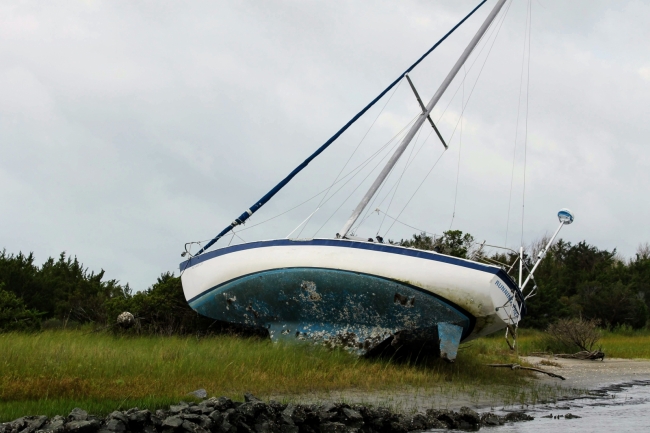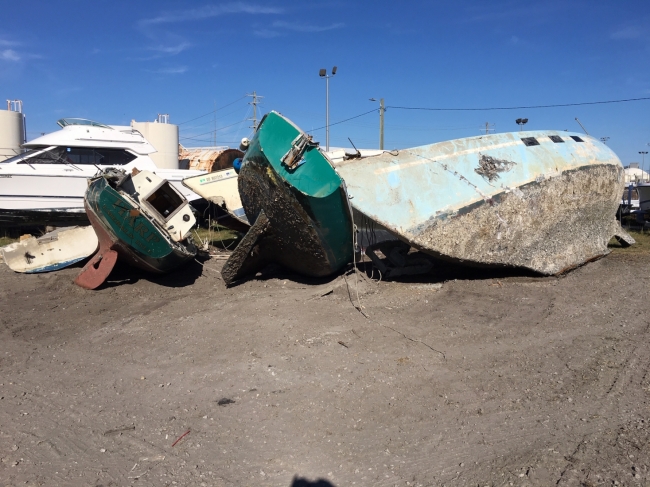Guest blog by: Paula Gillikin, Central Sites Manager, North Carolina Coastal Reserve and National Estuarine Research Reserve
A perfect contrast: A once treasured and well-traveled vessel lays on her side along the shore of the Rachel Carson Reserve in Beaufort, North Carolina where wild horses graze, researchers discover, and school children learn about estuaries on nature hikes. This is also a destination where residents and visitors escape their busy lives for recreation, solitude, fishing, and wildlife viewing. The vessel doesn’t have a logical place in this pristine environment. Yet she, and many others, have persisted for years in this place and many other shorelines around the country, threatening natural resources, diminishing commercial and recreational activities on the water, and creating hazards to navigation.
Abandoned vessels, some left or forgotten by the owner and others remaining after storms, pose complex legal challenges that are often roadblocks to prevention and removal efforts (Spoiler alert: there is a happy ending for Beaufort, North Carolina!).
Working with partners, the community, and support from a NOAA Marine Debris Program Community-based Marine Debris Removal grant, the Town of Beaufort was able to overcome legal barriers to cleaning up abandoned vessels, while simultaneously developing a way to prevent them in the future.
In 2018, the Town of Beaufort (Town) began to clean up marine debris, including abandoned vessels, in the waters around the Town and the Rachel Carson Reserve. This effort was in partnership with the North Carolina Coastal Reserve, Atlantic Coast Marine Group, and BoatUS Foundation. The project was the culmination of a harbor management plan, which included a local law to allow the Town to directly manage the local navigable waterway. This process also included assessing challenges with marine debris and engaging the public in a community focus group, that included Town of Beaufort Mayor, Rett Newton, as a way to understand their perspectives on waterway conditions. One thing was very clear, marine debris stakeholders and community members identified the same broad themes related to the effects of debris, particularly abandoned vessels in relation to the environment, aesthetics, and navigation safety.
These themes became infused throughout the marine debris removal project, including in the production of a short film to share the experience with other communities, that can be viewed below.
Almost 127,000 pounds of debris, including 11 abandoned vessels, were removed during the cleanup effort and disposed of properly. Smaller debris items were removed by citizens, state employees, students, and corporate volunteers from the local hospitality and financial industries. Much of the collected debris was recorded using the Marine Debris Tracker App. These data can be used by schools and the Town to track debris trends over time or be incorporated into a school project.
After several months of not having abandoned vessels in the Town’s waterways, curiosity led North Carolina Coastal Reserve staff to poll local citizens’ reactions to the project. Would the broad themes of the responses match that of the stakeholders and community members from before the project began? The answer was a resounding “yes!” with environment, anesthetics, and navigation safety rising as top reasons why citizens were glad to see the boats removed. This finding - in concert with project metrics being met and often exceeded - demonstrates the success of the Town of Beaufort Harbor cleanup project.








